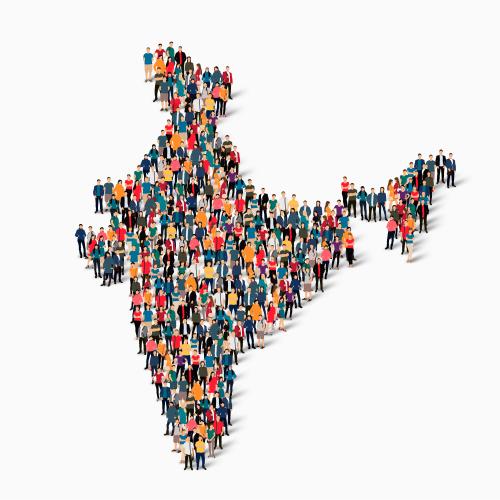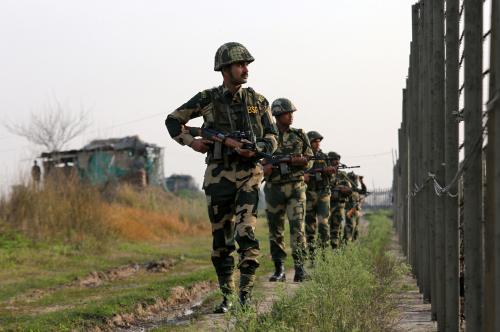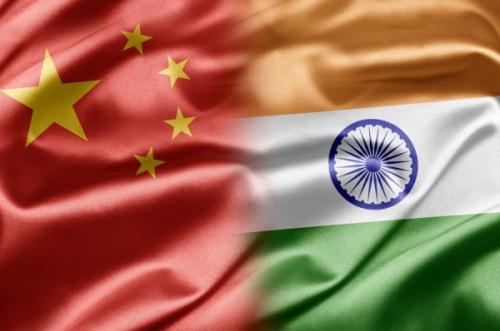Content from the Brookings Institution India Center is now archived. After seven years of an impactful partnership, as of September 11, 2020, Brookings India is now the Centre for Social and Economic Progress, an independent public policy institution based in India.
This article is a part of India 2024: Policy Priorities for the New Government, a compendium of policy briefs from scholars at Brookings India, edited by Dhruva Jaishankar and Zehra Kazmi, which identifies & addresses some of the most pressing challenges that India is likely to face in the next five years.
The next Indian government faces a world that looks very different from the way it did five – and certainly 10 or 20 – years ago. The global economy is facing headwinds: stagnant trade, disruptive technologies, and growing protectionism concerning agricultural and manufactured goods, key services, technology transfers, and labour mobility. U.S. President Donald Trump is rewriting the rules on trade, alliances, and multilateralism, some of which could well outlive his presidency. As its economic growth decelerates, China has become more assertive and less sensitive to the concerns of other countries, including India. This extends to the bilateral boundary dispute, the Belt and Road Initiative (including the China-Pakistan Economic Corridor and the securitisation of the Indian Ocean), economic and trade differences, and positions at various international institutions. India faces a periphery – Bhutan, Nepal, Bangladesh, Myanmar, Sri Lanka, and the Maldives – that is democratising, creating new opportunities and long-term stability but also new challenges to integration and security. Pakistan continues to pursue a revisionist agenda against India – including through the support of terrorist proxies under the nuclear umbrella – even as its economic fundamentals weaken further. Afghanistan’s future remains uncertain, and tensions remain high across the Persian Gulf and between the West and Russia. Amid this backdrop, what should be the priorities for the next Indian government until 2024?
Prioritise Trade and Defence Indigenisation
Commerce is increasingly a strategic tool, and India’s growing market is evolving into a potent point of leverage with other actors. However, India’s trade policy has traditionally been dominated by domestic priorities. Identifying areas of Indian comparative advantage, liberalising selectively, and coordinating trade policy between ministries – including through the creation of a special trade representative’s office – are vital. On issues such as the Regional Comprehensive Economic Partnership (RCEP), India faces imminent and difficult choices. Joining RCEP will adversely affect certain sectors of the Indian economy; but not joining will also have costs, and will exclude India from the next generation of regional trade norms. Efforts must be made now in framing trade policy and prioritising certain multilateral and bilateral negotiations so as to avoid having to take such difficult decisions in the future.Defence self-reliance remains another urgent priority.
Despite India having the fifth largest defence budget and hosting a large defence industry, it remains the world’s largest defence importer while its exports are still negligible. Indigenisation of defence production will require: integrating budgetary, technological, industrial, and export factors into the military services’ qualitative requirements (QR), ensuring steady disbursal of funds by the Finance Ministry, and enhancing competition for contracts and innovation within the defence public and private sectors. Many of these policies will require top-down leadership decisions, often against staunch vested interests in the Indian bureaucracy and businesses, and despite very real constraints of time, financial resources, expertise, and political capital. But the absence of decision-making in these areas will severely constrain India’s rise as a global power.
Focus on the Neighbourhood and Indo-Pacific
The biggest external strategic challenge facing India concerns the manner of China’s rise and its increased assertiveness. This is impinging on a number of vital Indian interests through the militarisation of the Himalayan border region and the Indian Ocean; the deepening Chinese relationship with Pakistan; the undermining of India’s ties with the likes of Russia, Nepal, and the Maldives; non-market economic practices resulting in dumping, trade barriers, and competitive disadvantages; and India’s entry into international institutions such as the UN Security Council and Nuclear Suppliers Group. Addressing this challenge will require the next government to focus laser-like on improving relations with the neighbourhood, including devoting diplomatic attention, providing assistance, improving connectivity, and recasting regional institutions in a positive light. Furthermore, India must continue to implement an active Act East Policy in the Indo-Pacific. This will require, first, working to secure the Indian Ocean region from further militarisation. Second, India should connect politically, economically, militarily, and socially with Southeast Asia. Third, New Delhi must deepen security partnerships with balancing powers such as the United States, Japan, Australia, Russia, and France. And fourth, it should manage differences with Beijing through sustained engagement.
Contain Pakistan & Balance Eurasia
While policy in the near-abroad and to its east is less a question of vision and more one of implementation, a trickier balancing act will be required to India’s west and north. Much will centre on the immediate problem of Pakistan. From 1989 to 2016, India was stuck in a cycle of talks with Pakistan punctuated by disruptions caused by Pakistani military and terrorist provocations. Engagement served a useful purpose at times in mitigating international opprobrium, deflecting attempts at third-party mediation, and managing escalation. However, this experience also makes it clear that positive engagement has done little to alter Pakistani behaviour. The growing international frustration with Pakistan – whether its continued support for terrorist groups, its adverse civil-military relations, its non-proliferation record, or its involvement in Afghanistan – presents an opportunity for India to relentlessly press its advantages, within the confines presented by both countries’ nuclear weapons. Although Pakistan will continue to resist coercive behaviour, with likely support from China, the sustained isolation of Pakistan – even if unilateral and initially inadequate – is more likely to result in behavioural changes as the power disparity grows further in India’s favour than a return to the cycle of talks and disruptions.
More delicate balancing acts will have to be executed in West Asia and Eurasia. India’s partnerships with many centres of global and regional power are increasingly positive and broad, and have assumed a logic of their own. This extends to the United States, Europe, Japan, South Korea, Southeast Asia, Australia, Canada, the United Arab Emirates, Saudi Arabia, and Israel. These will remain India’s most important relationships. But as these ties improve, India will face tough balancing acts in preserving mutually-beneficial relations with Russia and Iran. Russia is more important and complicated, given India’s continued dependence on Russian military hardware, spares, and maintenance; close technological cooperation; and concerns about Russia’s relations with China. Engaging with Moscow will occasionally imperil relations with the United States and Europe, but this will require a series of clear-headed cost-benefit analyses. Iran is a more manageable issue, given leaner relations, but cooperation on connectivity and Afghanistan will remain important. To the extent that India can manage these balancing acts, it should do so.
The Brookings Institution is committed to quality, independence, and impact.
We are supported by a diverse array of funders. In line with our values and policies, each Brookings publication represents the sole views of its author(s).




Commentary
India 2024: A global India
May 17, 2019